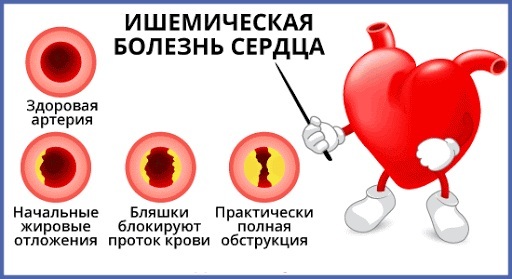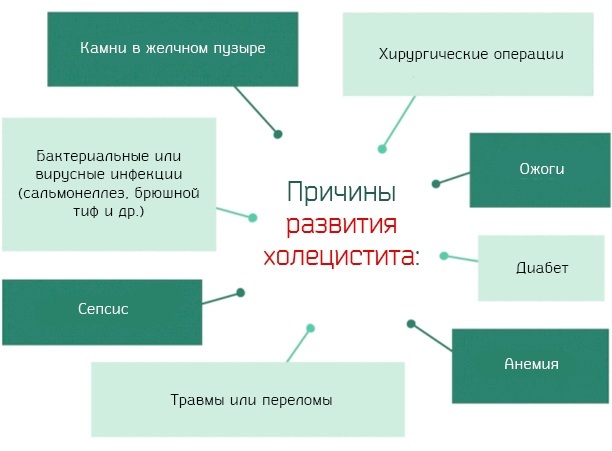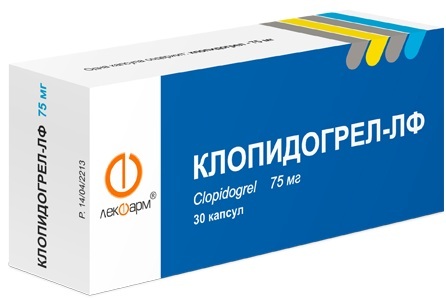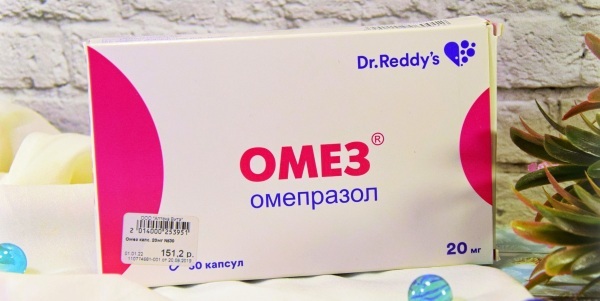Chest discomfort - This is a symptom that may indicate various reasons. Factors are subdivided into physiological and pathological. The tingling sensation can be localized on the right, left, in the middle. The most serious symptom danger is heart or lung disease. Therefore, it is necessary to study the causes of the appearance of the symptom and how to treat it.
Record content:
- 1 Reasons for the appearance
-
2 Possible diseases
- 2.1 The cardiovascular system
- 2.2 Respiratory system
- 2.3 Gastrointestinal tract (GI tract)
- 2.4 Mammary gland
- 2.5 Musculoskeletal system
- 2.6 Nervous system
- 3 Diagnostics
- 4 When to see a doctor
-
5 Treatment methods
- 5.1 Medications
- 5.2 Traditional methods
- 5.3 Other methods
- 6 Possible complications
- 7 Chest pain videos
Reasons for the appearance
Colitis in the sternum (left, right, or middle) is a symptom that can indicate a variety of causes.

The most common factors are:
- pregnancy - tingling sensation in the chest can appear in later stages, as the internal organs are displaced due to the increased size of the uterus and mammary glands;
- impressionability and emotionality of a person - frequent stress can lead to tingling in the sternum;
- panic attacks - a disorder characterized by unreasonable fear, as a result of which the heart rate increases and tingling in the chest may occur;
- the onset of menstruation - in some women, tingling in the sternum may occur several days before menstruation and after 1 - 2 days from the appearance of bleeding, in addition there is swelling and heaviness in the chest;
- lactation - during this period, the mammary glands are actively functioning, therefore, tingling in the sternum may occur, discomfort is especially pronounced in the first 1.5 - 2 months. from the onset of lactation;
- strong physical activity - if a person is not ready for such a load, there is a high probability of stretching the muscles of the sternum, as evidenced by tingling.
Possible diseases
A tingling sensation in the chest may indicate pathology.
Most often, a symptom indicates damage to the following organs:
- the cardiovascular system;
- respiratory system;
- gastrointestinal tract;
- mammary gland;
- musculoskeletal system;
- nervous system.
A detailed description of possible pathologies is indicated later in the article.
The cardiovascular system
A tingling sensation in the chest can be associated with cardiovascular disease. Details are shown in the table.
| Name | Description |
| Coronary artery disease (CHD) | Insufficient blood supply to the heart. Symptoms of the disease:
|
| Angina pectoris | A form of ischemic heart disease, periodically resulting from a lack of oxygen. Angina symptoms:
|
| Pericarditis | With the disease, the pericardial sac (outer shell of the heart, pericardium) becomes inflamed. Symptoms of pathology:
|
| Myocarditis | Disease refers to inflammation of the myocardium (muscle layer of the heart).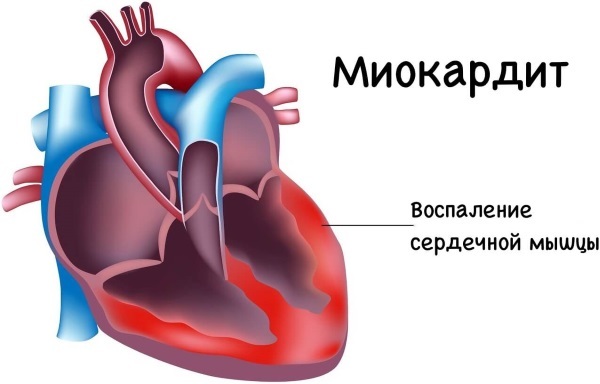 Symptoms of pathology:
|
| Aortic aneurysm | The pathology is characterized by the expansion of the aorta. The lumen becomes abnormal, 2 or more times the optimal size. Symptoms of a thoracic aortic aneurysm:
Signs of enlargement of the aorta of the heart:
|
| Myocardial infarction | Necrosis (death) of the heart due to an acute lack of blood flow and oxygen. A heart attack is an acute clinical form of coronary artery disease. Periods of development of the condition and symptoms: 1. Preinfarction period. In this case, there is pain behind the sternum, shortness of breath, increased heart rate. Additionally, there is general weakness, dizziness. 2. The most acute period. Pain is a characteristic symptom for this stage. Most people complain of intense, constricting and pressing discomfort. Patients indicate that there is a feeling of a heavy plate on the chest. Additionally, the appearance of burning (like fire) or dagger pains is possible. In this period, the skin turns pale, there is increased sweating. In addition, breathing and pulse may increase. Localization of pain in another place is allowed - limb, shoulder, scapula. With a heart attack, the discomfort is wave-like. That is, the pain gradually increases, becomes unbearable, then its intensity decreases. But then the discomfort grows again. On average, the pain lasts 20-30 minutes. But it is possible to increase the time to several hours or even days. When the pain is severe, the person is allowed to hallucinate. 3. Acute period. The focus of necrosis is finally formed. At this point, the discomfort disappears. But pain may be present due to the expansion of the heart attack zone. Blood pressure decreases and the pulse quickens. There are atypical forms of heart attack. In this case, pain may be absent, other manifestations come to the fore. For example, arrhythmia or choking. |
| Mitral valve prolapse | The mitral valve is one of the four valves in the heart. Its opening and closing is necessary to control blood flow between the left atrium and ventricle. In case of prolapse, the valve bends back and is absorbed into the left atrium. That is, it becomes like a parachute. When the heart contracts, the valve does not close tightly, a portion of blood returns to the atrium. Prolapse symptoms:
|
Respiratory system
Stabbing in the chest can be associated with diseases of the respiratory system.
Common pathologies:
- pneumonia is an inflammation of the lungs.

- bronchitis - inflammation of the bronchial mucosa;
- tracheitis - an inflammatory process in the trachea;
- lung cancer - a malignant tumor in an organ;
- pulmonary tuberculosis - infectious organ damage;
- pleurisy - inflammation of the pleura (lines the chest from the inside and the lung outside);
- pulmonary embolism - blockage of an artery or branches by a blood clot;
- pneumothorax - accumulation of air in the pleural cavity;
- chronic obstructive pulmonary disease (COPD) - an inflammatory process characterized by impaired bronchial patency, structural changes in the lung tissue and blood vessels;
- bronchial asthma is a chronic inflammation of the airways.
Common symptoms of pathologies of the respiratory system:
- cough;
- wheezing during breathing;
- labored breathing;
- dyspnea;
- pain in the head;
- increased body temperature;
- chills;
- discomfort in the sternum when coughing or taking a deep breath.
Gastrointestinal tract (GI tract)
A tingling sensation in the sternum may indicate gastrointestinal diseases. Common pathologies are listed in the table.
| Name | Description |
| Cholecystitis | Inflammation of the gallbladder. Symptoms:
|
| Stomach ulcer (PUD) | Formation of a deep defect in the gastric mucosa. Symptoms of the disease:
|
| Gastroesophageal reflux disease (GERD) | A complex of symptoms associated with impaired operation of the lower sphincter and the throwing of stomach contents into the esophagus. Symptoms:
|
| Diaphragm hernia | Displacement of the lower part of the esophagus or stomach from the peritoneum to the thoracic region. Signs:
|
Mammary gland
Colitis in the sternum (left, right, or middle) is a symptom that may indicate breast pathology.

Namely:
-
Mastopathy. Benign breast tumor. Symptoms include pain, thickening of the breast structure, discharge from the nipples (the secret is transparent or resembles colostrum).
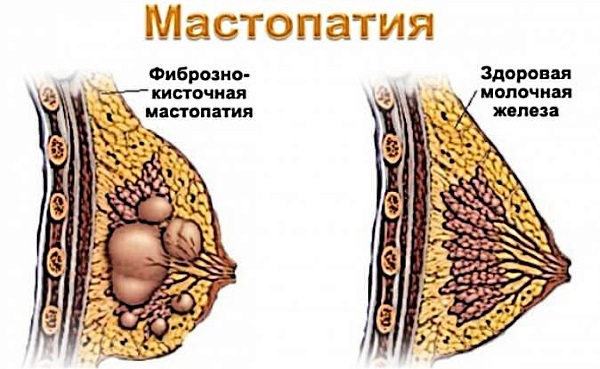
- Cyst. Pathological cavity in the mammary gland, which has walls and liquid contents. Symptoms depend on the size of the tumor. The cyst is less than 2 cm. may not bother a woman and can only be diagnosed on mammography. Large education is characterized by pain and burning sensations. Symptoms worsen with the onset of menstruation.
- Crayfish. Malignant tumor of the breast. Of the primary symptoms, a small lump in the chest is isolated, but discomfort does not appear. Then, over the tumor, the skin is pulled in or wrinkled. The nipple secretion is clear, orange, or another color. The size of the mammary glands changes, because of this, the breast looks asymmetrical. Additionally, dryness of the skin, an increase in body temperature (up to 40 degrees), an increase in lymph nodes are possible.
Musculoskeletal system
Tingling in the sternum is a sign that may indicate pathology of the musculoskeletal system.
The most common ones are:
- osteochondrosis - loss of intervertebral discs of the ability to function normally;
- myositis is a group of diseases characterized by inflammation of the skeletal muscles;
- spine fracture.
Signs of pathologies of the musculoskeletal system:
- backache;
- headache;
- numbness of the limbs;
- muscle pain;
- impaired joint mobility;
- fatigue at minimum exertion;
- rachiocampsis;
- pain in the limbs;
- increased body temperature;
- violation of respiratory function.
Nervous system
Tingling sensation in the chest can be associated with intercostal neuralgia. It is a disease of the peripheral nerves.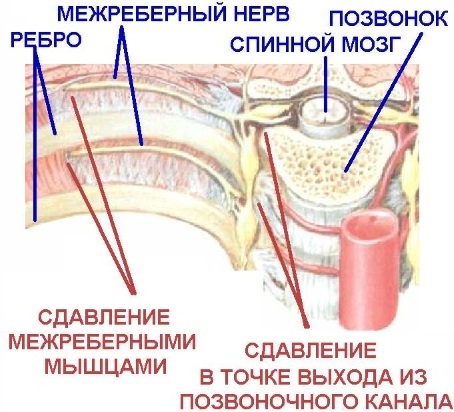
Symptoms:
- pain in the ribs, which increases with activity, coughing, breathing;
- different nature of discomfort - pain can be from acute to aching;
- change in the localization of pain - discomfort can be given to the lower back, scapula;
- labored breathing;
- twitching of muscles together with pain;
- paleness and redness of the skin at the site of nerve damage;
- numbness when pressing on the skin at the site of nerve damage.
Diagnostics
Colitis in the sternum is a symptom that can appear on the left, right, in the middle. The symptom needs diagnosis, as it allows you to determine the exact cause of the appearance.
The survey includes the following methods:
- general analysis of blood and urine - procedures make it possible to identify the value of important indicators (hemoglobin, erythrocytes, etc.);
- coprogram - a study of feces, which allows you to study their chemical composition and physical properties;
- electrocardiography (ECG) - the method is based on recording the electrical activity of the heart;
- ultrasound examination (ultrasound) of the heart, abdominal cavity - using the procedure, deviations in the size of the organs are revealed;
- coronary angiography - a method of studying the coronary arteries of the heart using X-ray;
- myocardial scintigraphy - the method allows you to assess the blood supply to the heart;
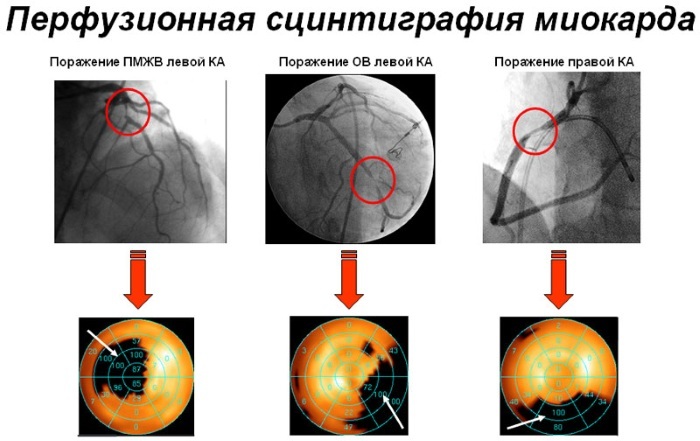
- chest x-ray - as a result, a snapshot of the organ is obtained, by which it is possible to determine the presence of pathologies;
- computed tomography (CT) - the examination is based on X-ray radiation, as a result of the procedure, three-dimensional images of the area under study are obtained;
- magnetic resonance imaging (MRI) - the method is based on electromagnetic radiation, according to the results of the procedure, three-dimensional images of the investigated area are obtained;
- mammography - examination of the mammary gland;
- bronchoscopy - a method for examining the respiratory tract;
- biopsy - a small area of tissue is taken from the affected organ and sent to the laboratory, as a result, pathology is revealed;
- gastroscopy - a method of examining the esophagus, stomach and duodenum 12;
- esophagomanometry - using the procedure, the contractile activity of the esophagus is assessed.
Diagnostic costs may vary. It all depends on the list of procedures, city, organization. Therefore, the price must be checked at the clinic. You can get diagnostics free of charge. To do this, you need to contact the clinic with a compulsory health insurance policy (MHI).
When to see a doctor
If there is a tingling sensation in the sternum, you should visit a specialist. To begin with, you can contact a therapist - this is a general practitioner.
He will carry out the following actions:
- survey - the doctor asks questions that relate to symptoms and concomitant diseases;
- measurement of indicators (blood pressure, pulse, temperature);
- examination of the human body.
Further, they give a direction for diagnostics. It may be necessary to consult an additional specialist. It all depends on the cause of the tingling sensation.
Doctors whose consultation you may need:
- cardiologist - detection and treatment of diseases of the cardiovascular system;
- neurologist - diagnostics and treatment of pathologies of the nervous system;
- mammologist - detection and treatment of breast diseases;
- oncologist - detection and treatment of benign or malignant tumors;
- rheumatologist - definition and treatment of diseases of the musculoskeletal system;
- gastroenterologist - diagnostics and therapy of gastrointestinal tract pathologies;
- pulmonologist - detection and treatment of diseases of the respiratory system;
- psychiatrist - therapy for panic attacks;
- psychologist - normalization of the emotional background of a person;
- surgeon - carrying out surgery.
Signs in which you need to call an ambulance:
- chest pain cannot be tolerated;
- the person's condition is rapidly deteriorating;
- pulse and blood pressure are greatly increased;
- feeling short of breath;
- severe shortness of breath;
- pain does not decrease after taking nitrates;
- consciousness is disturbed.
Treatment methods
Colitis in the sternum (left or right) is a symptom that needs to be treated. Most often, complex therapy is prescribed, that is, a simultaneous combination of several methods.
As a treatment they use:
- medications;
- folk remedies;
- other methods.
Therapy is not required if the symptom has passed on its own and does not indicate a disease.
Medications
Medicines make the person feel better and eliminate the tingling sensation in the chest. The list of medications depends on the cause of the symptom. The table lists common factors that cause tingling in the chest, as well as how they can be treated with medication.
| The name of the factor that caused the tingling sensation in the sternum | Drug therapy |
| Ischemic heart disease | The following medications can be used as treatment:
|
| Angina pectoris | Therapy is similar to coronary artery disease. Additionally, for angina pectoris, nitrates are used (Nitroglycerin, Nitrosprey, Nitromint) - they quickly stop the attack. |
| Pneumonia | The following drugs are used for treatment:
|
| YABZH | The following drugs are used as therapy:
|
| Osteochondrosis | The following medicines are used for treatment:
|
| Intercostal neuralgia | The following drugs are used as therapy:
|
| Panic attacks | In the treatment of disorders, the following medications are used:
|
Medication must be prescribed by a specialist. The doctor takes into account the reason for the appearance of the symptom, the individual characteristics of the organism. In addition, the specialist studies the instructions for use of the drug, decides on the prescription of the medication.
Traditional methods
Colitis in the sternum (left, right, middle) is a sign for which herbal recipes can be used. Folk remedies have a natural composition, so they rarely cause side effects. It is better to use recipes as part of complex therapy. This way you can maximize the effectiveness of the treatment.
Popular folk remedies:
- Alum. The recipe eliminates sternum discomfort. For cooking, you need to take 2 tsp. alum and 250 ml of warm water. Mix everything well, add 200 ml of alcohol. Moisten cheesecloth in the solution, squeeze out a little. Apply a compress to the chest. To enhance the effect of the recipe, cover the top with a plastic bag and towel. It is best to leave the compress overnight. Course - 15 procedures.
- Pumpkin. To reduce the tingling sensation in the breasts, it is necessary to finely grind the product. Then warm up the mass a little, put it on cheesecloth or thick cloth. Place on the chest. You can place a plastic bag and towel on top to increase efficiency. It is better to leave the compress until morning. Course - 6 procedures.
- Cabbage and fermented milk. The recipe allows you to eliminate chest pain. For cooking, you need to take the cabbage and grind it to the state of gruel. Add curdled milk. The ratio of the components is 10: 3. Take gauze or cloth, lay out the mass, place the compress on the chest. If the pain is severe, the prescription can be used 3 times a day. Course - 1 month.
- Cabbage or burdock leaf. It is necessary to attach the component to the chest. To enhance the effect, you can add a plastic bag and towel on top. Keep the sheet for 15 - 30 minutes.
- Herbal mixture. To prepare the recipe, you will need an equal amount of lemon balm, motherwort, St. John's wort. Then take 1 tbsp. mixture and 300 ml of hot water. Leave for 20 minutes, filter through cheesecloth. Take 2 tbsp. 3 times a day.
Other methods
In addition to drugs and folk methods, with tingling in the chest, additional methods of therapy can be used. Details are shown in the table.
| Name | Description |
| Proper nutrition | If you apply a diet as part of a complex therapy, a person's well-being improves, and recovery is accelerated. 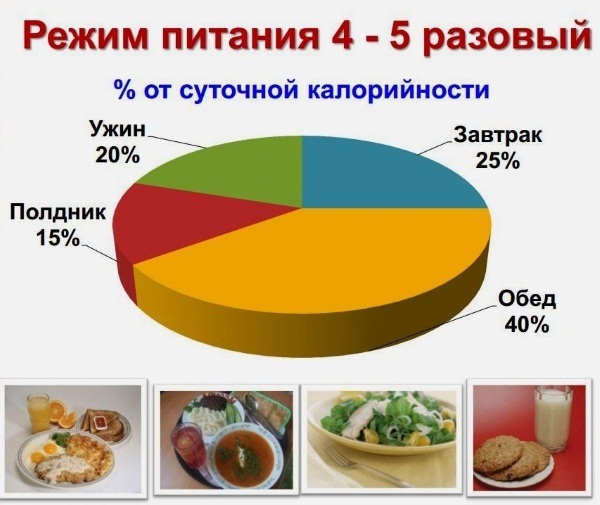 Proper nutrition includes the following points: Proper nutrition includes the following points:
|
| Elimination of bad habits | Smoking, alcoholic beverages, drugs are factors that negatively affect the entire body. Therefore, it is recommended to give up bad habits. |
| Surgery | If it is pointless to use conservative methods of therapy or they do not help, a person is recommended to have a surgical operation. For example, with myocardial infarction or lung cancer. The method of carrying out and the need for intervention is selected by a specialist. |
Possible complications
Tingling in the sternum can cause complications. This usually happens in the absence or untimely treatment of the symptom. For example, if the symptom indicates a disease. In this case, the pathology will develop, in the future it will take more time for treatment. The most serious consequences are disability and death.
A symptom in the form of a tingling sensation in the sternum can be localized on the left, right, in the middle. The symptom indicates physiological or pathological factors. To determine the cause of the symptom, you need to visit a doctor, he will send a person for diagnosis.
The therapy is prescribed after the examination. Treatment includes medicines, folk remedies and other methods (proper nutrition, exclusion of bad habits). The most important thing is to reduce the likelihood of complications. To do this, you must adhere to the doctor's recommendations.
Chest pain videos
Malysheva on the causes of chest pain:

